At some point last year, I remember looking at a map of Lolland, missing it terribly and thinking about what weekend adventures to aim for when moving back there (I did this January!). That’s when I discovered a forest called Flintinge Byskov. The name “Flintinge” spoke to me, intrigued me. Flint is a type of rock which has been worked by humans for thousands of years to make various tools, especially during the Stone Age.
This name just couldn’t be a coincidence.
And sure enough, as my colleague told me, the forest hides several burial structures from the Neolithic (late Stone Age), and thus really lives up to its name!
On a beautiful Sunday in early March, I decided to go for a hike through the forest to spot some of these burial structures. I planned out a route taking me from the town of Sakskøbing past Krenkerup Manor, through Flintinge Byskov to the village of Flintinge and along an old church trail to the village of Toreby. 15 sunny kilometres through classic Danish countryside landscapes with prehistoric remains, an early 13th-century church, and a beautiful late 15th-century manor thrown into the mix!
We’d had a week of beautiful weather with clear blue skies and although it was cold and frosty, the sun had been out to warm our cheeks all day. When Sunday came around, I was desperate to get out there and go for a hike, my first hike of 2022!
I caught the train towards the town of Sakskøbing where my hike began. Sakskøbing is a small town, home to just over 4,500 people, but it does have a very interesting landmark – it’s water tower, Saxine, who smiles to the town and its visitors. I made sure to walk past her before making my way out of the town, past two small lakes and into the first forest of the day, Holmeskov Dyrehave. The naked trees accompanied by rows of snowdrop flowers showed the first signs of spring.

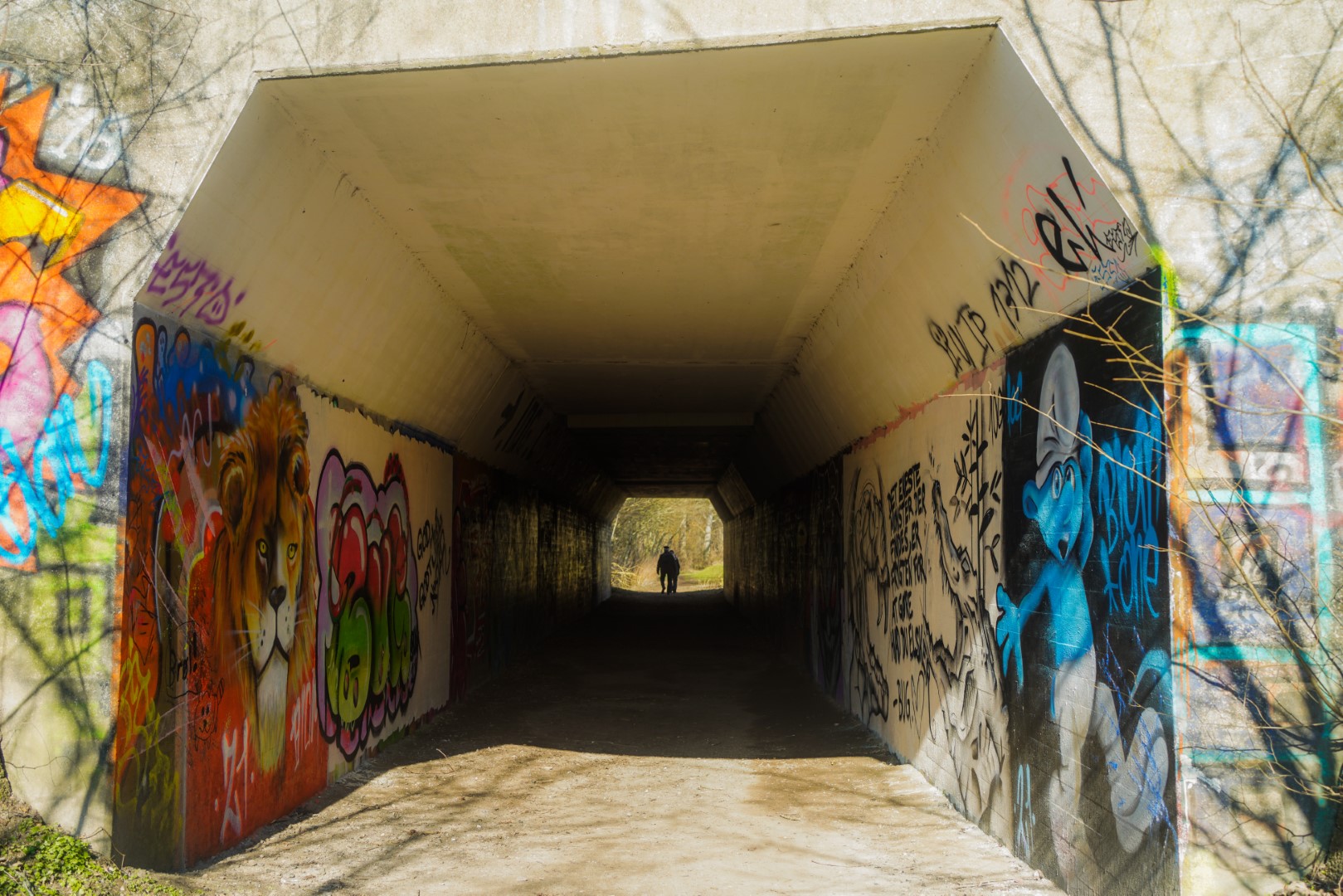

It wasn’t long until I was out of the forest, and I soon spotted one of Lolland’s 44 castles and manors. This one, Krenkerup Manor, was documented as early as the 1330s, making it one of Denmark’s oldest manors. With an area covering 3,700 ha, it’s also one of the largest estates in the country. Furthermore, its bright yellow façade surely makes it stand out from the rest.
Unfortunately, much of the manor grounds are private, but it is possible to explore Haveskov, a garden with a small forest and beautiful views of the manor reflecting in the lake surrounding it. I found the perfect spot for the first snack break of the day, on a small stone staircase leading down to the lake, with a most picturesque view of the manor.
A week later, I returned to Krenkerup Manor, rather unexpectedly actually. A friend had come over from Berlin to visit me, and he had read about the local brewery housed at the manor, although sadly not in the main building (one can dream!). Beer enthusiast as he is, I could tell that he really wanted to visit it. So we took a trip there on yet another sunny Sunday, and not only got to experience one of Lolland’s cosy breweries and taste a delicious local beer and local apple juice, we also saw the manor from a fresh and closer perspective! So even though it’s not possible to explore the manor itself, many beautiful views of it are to be found if you just do a bit of exploring.
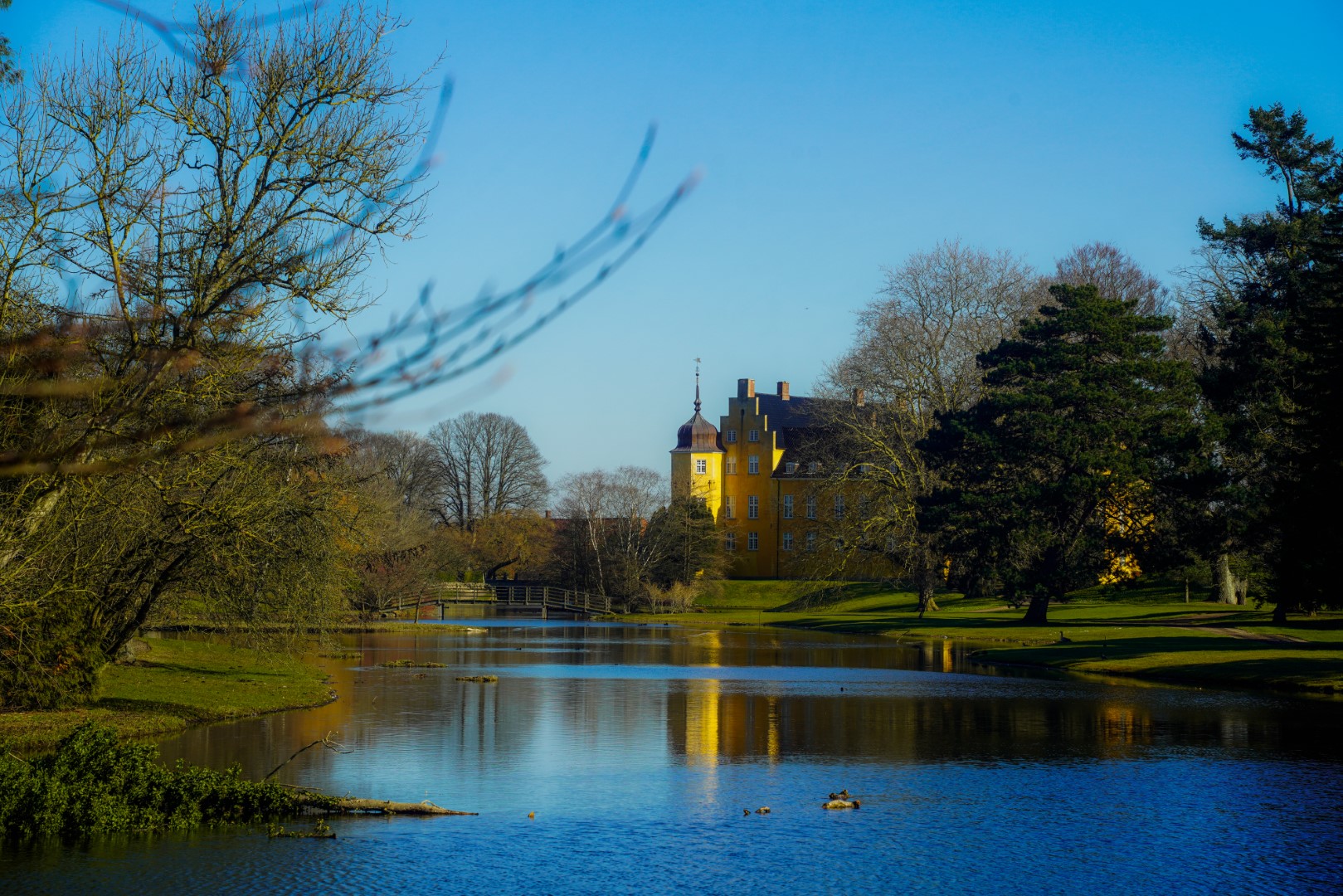
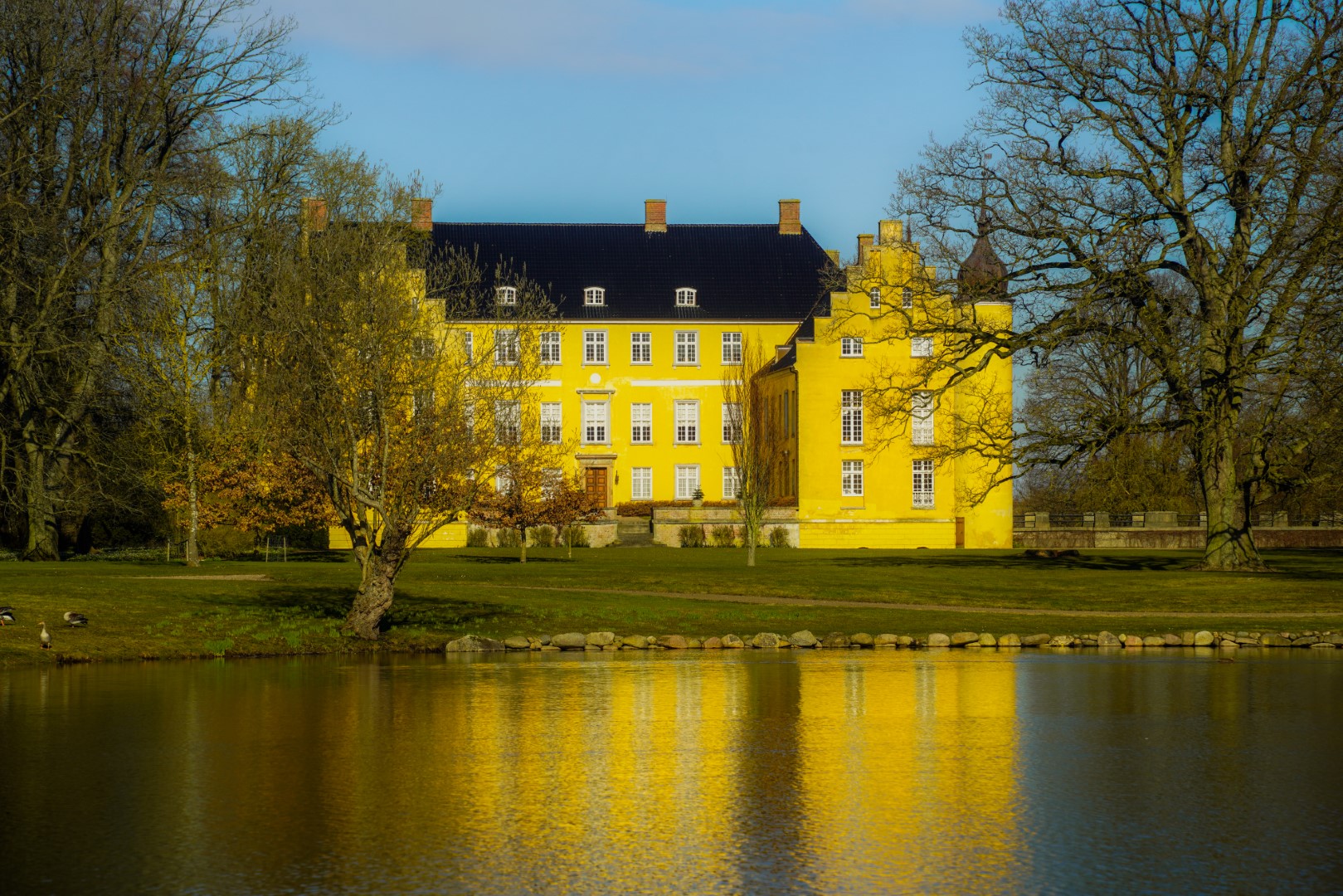
In my quest for a closer view of the manor during my hike, I ended up almost entering private ground as I followed tiny footpaths into a forest. I never found the view I was looking for, and like an idiot, I then tried to climb a fallen tree trunk over a deep river to get to a road on the other side of it. Of course, I stopped halfway, scared not for my own safety but for the safety of my camera, so I crawled slowly back again, admitting my defeat.
In through the forest I went, hoping to eventually stumble upon a bridge or something a little more stable than a tree trunk. When I eventually got out of the forest, I saw that there was a bridge to the gravel road I’d been trying to get to, so finally, I was on my way again, on safe ground! I followed the road towards the manor again, hoping to get a closer look at it, but when I was met by yet another “private” sign, I gave up and headed east along a country road, bidding farewell to the pretty manor.
The country road was long and winding, and offered endless views of flat fields. A flock of deer studied me as I walked past in the distance, and soon after, I found my way into the next forest, Hydeskov.
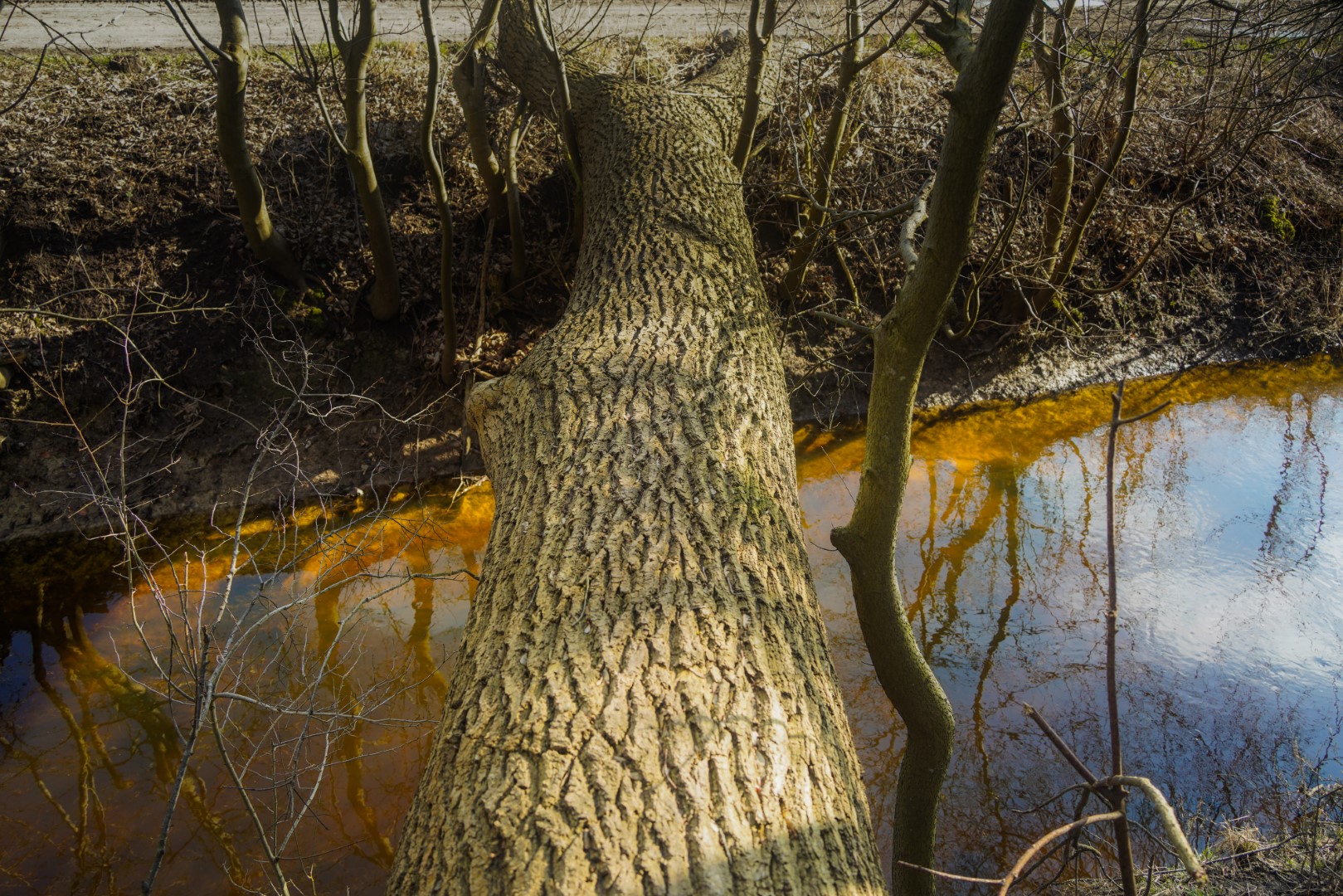
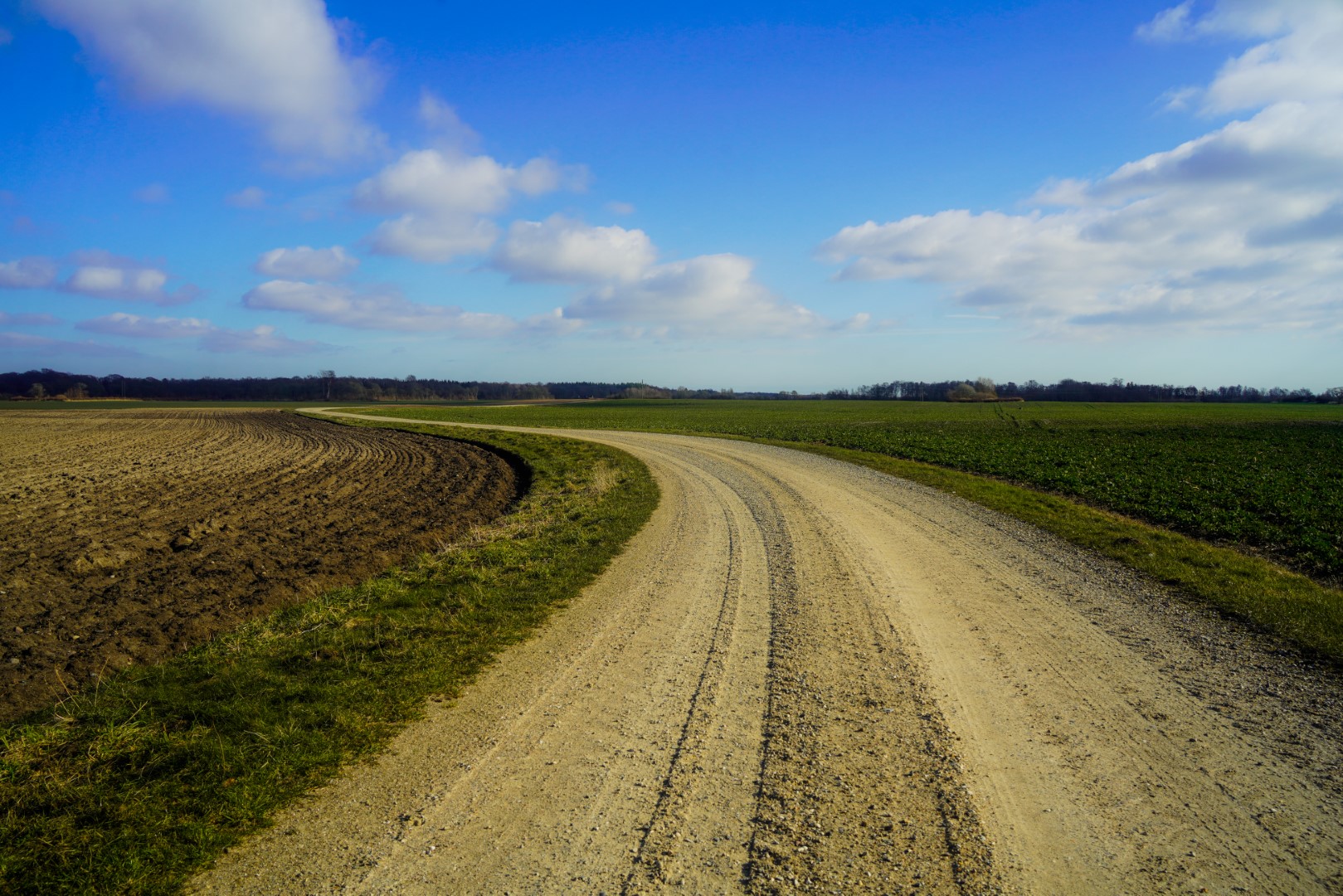
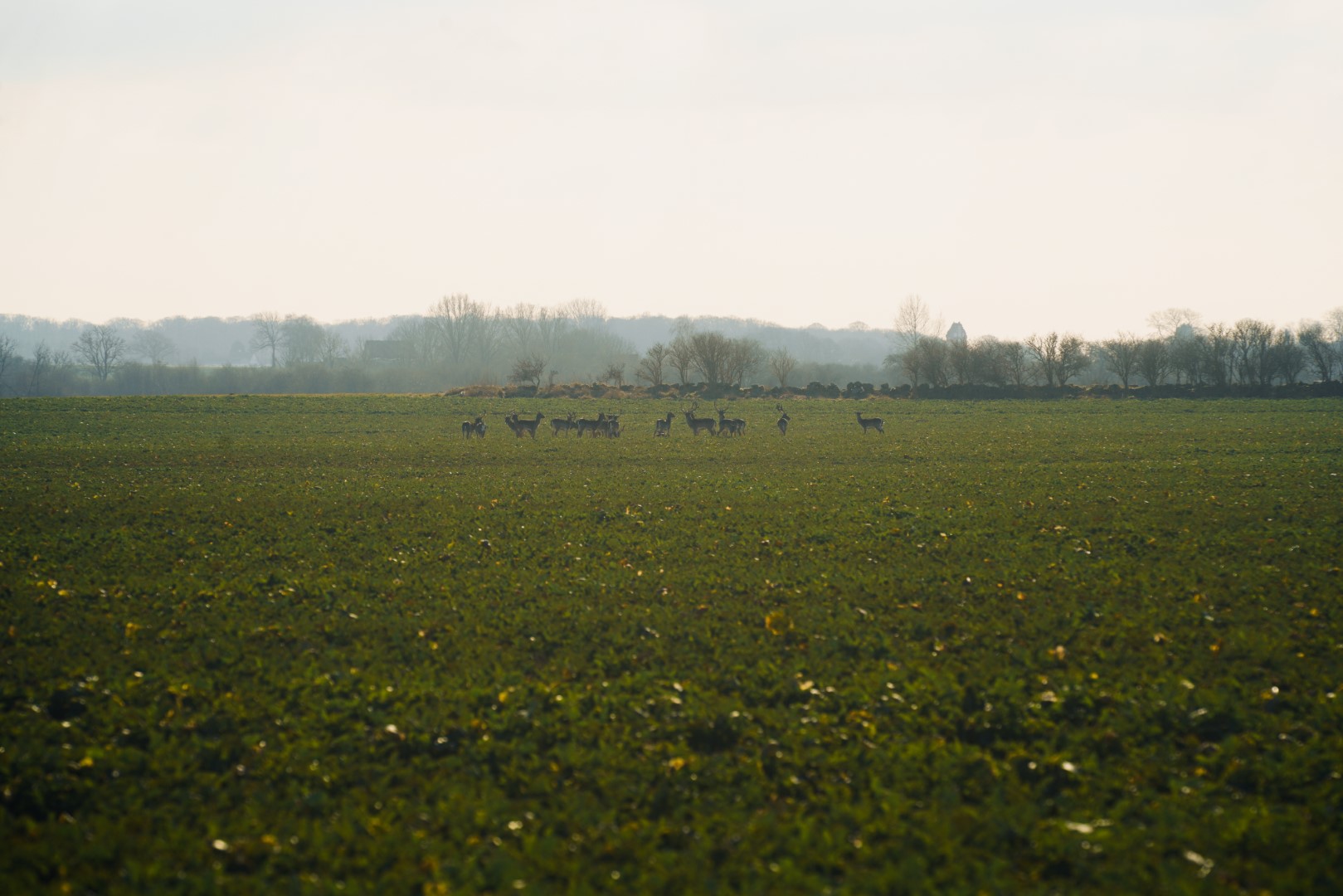
I grabbed a dark chocolate bar from my bag and enjoyed it as I made my way through the forest, aiming for Flintinge Byskov which it’s connected to. I said hello to a friendly dog and walked with the sun along the gravel road that winds through the forest.
It wasn’t long until I ran into the next obstacle: crossing a stream which was narrow but with steep edges. For a short person like myself, it was just slightly too wide to safely jump over. Instead, I collected some big branches and made a bridge for myself, and eventually got over safely and with dry feet! And just like that, I was in Flintinge Byskov!
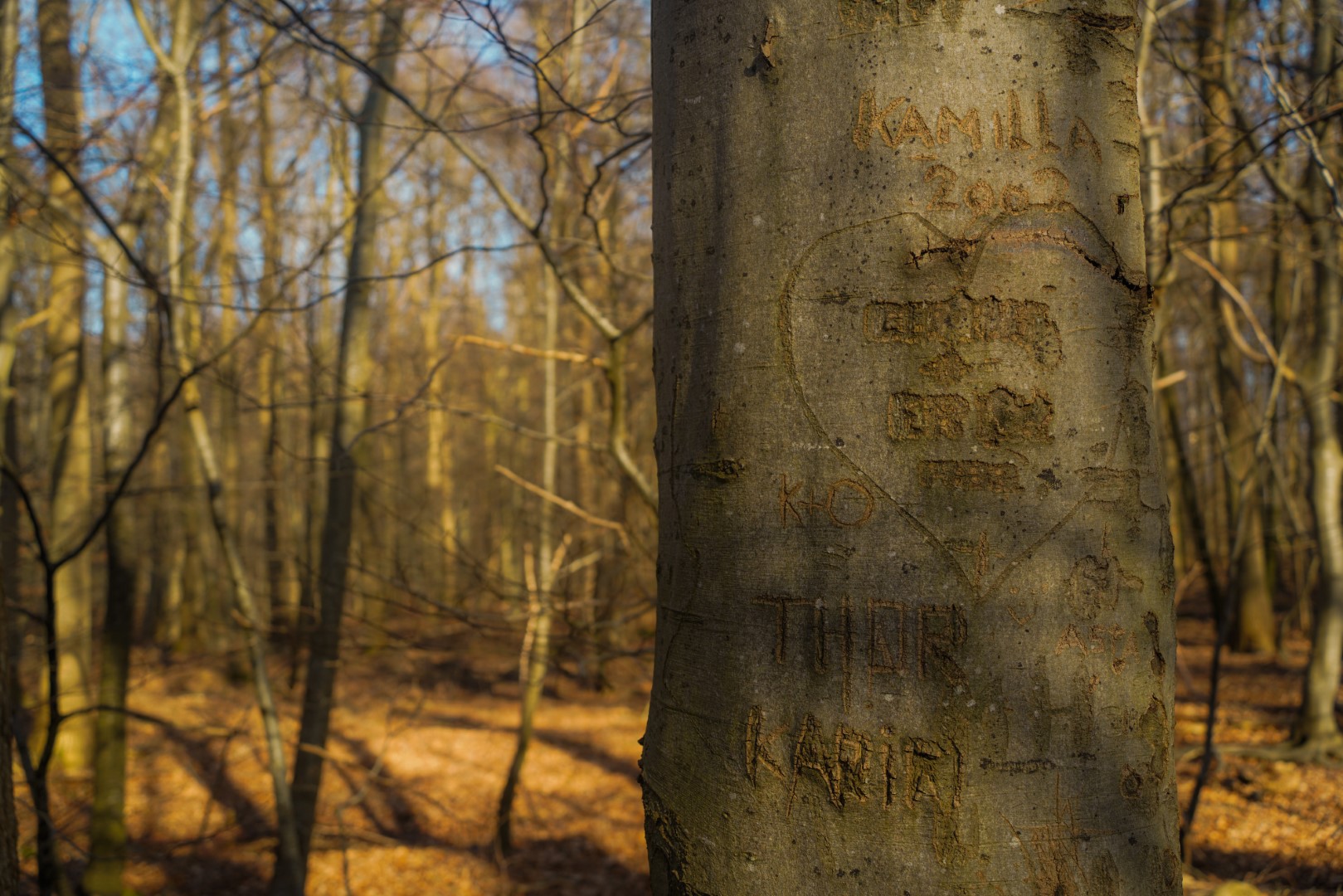
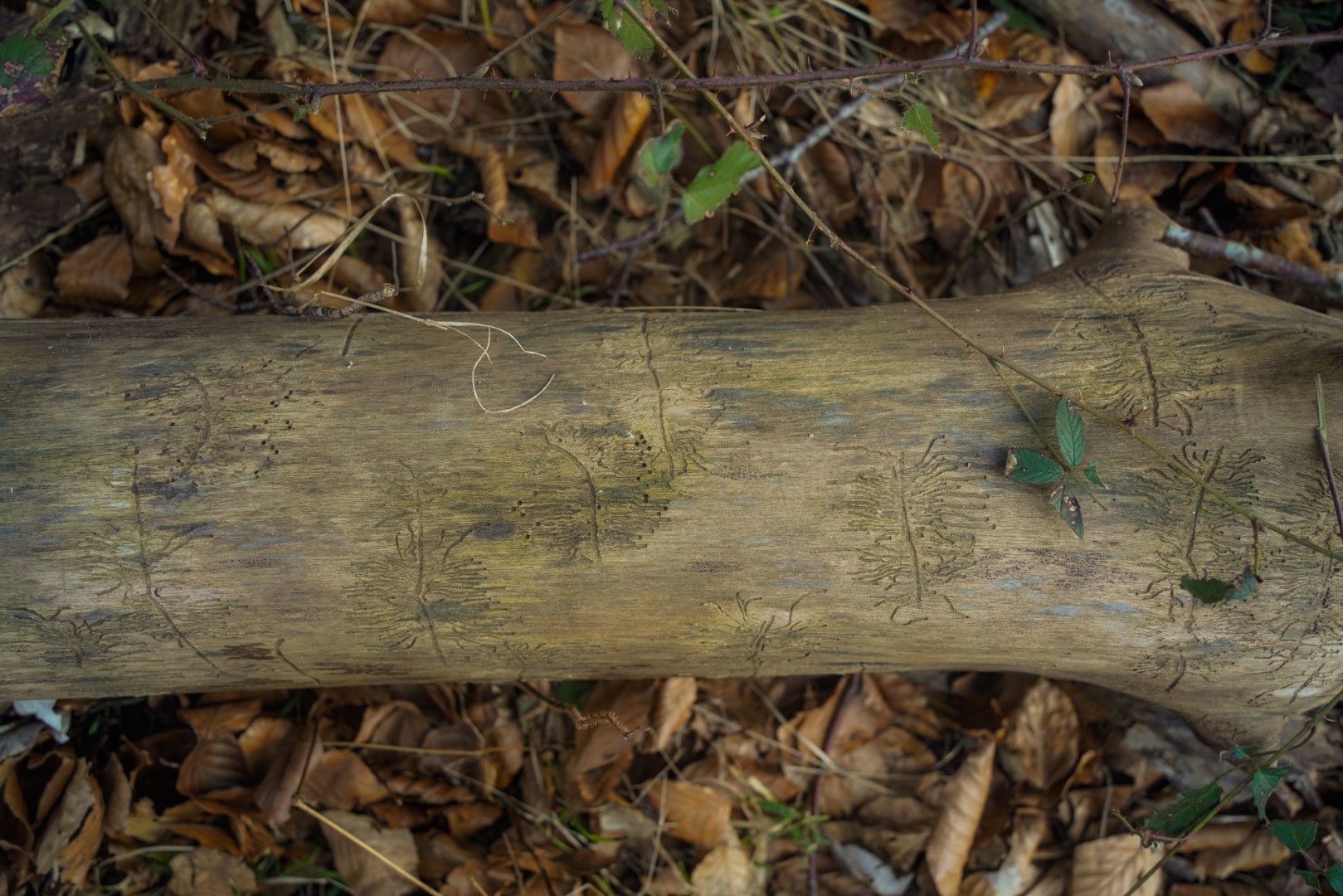
I made my way through the forest, off-trailing for the first time that day, and soon spotted a Neolithic passage grave, arguably the most spectacular of Flintinge Byskov’s many megaliths – and also the only one you can climb inside! The excavation in 1879 revealed several skeletal remains, as well as flint axes, flint arrowheads, amber beads, ornamented pottery sherds among other finds.
The chamber of the passage grave is 7,25 m long and 1,75 m wide, and it’s largely intact despite its old age – it was built around 3200 BC! Bronze Age artifacts found in one corner of the chamber reveals that it was in use for many hundreds of years. I did, of course, climb in, and I enjoyed having the space to myself (ok, except for the huge spiders that inevitably inhabit the cracks in the rocks).
Just east of the passage grave lie the remains of a dolmen, another burial type from the Neolithic which predates the passage graves, typically dating from around 3500 BC to 3200 BC when they were replaced by the larger and more complex passage graves.


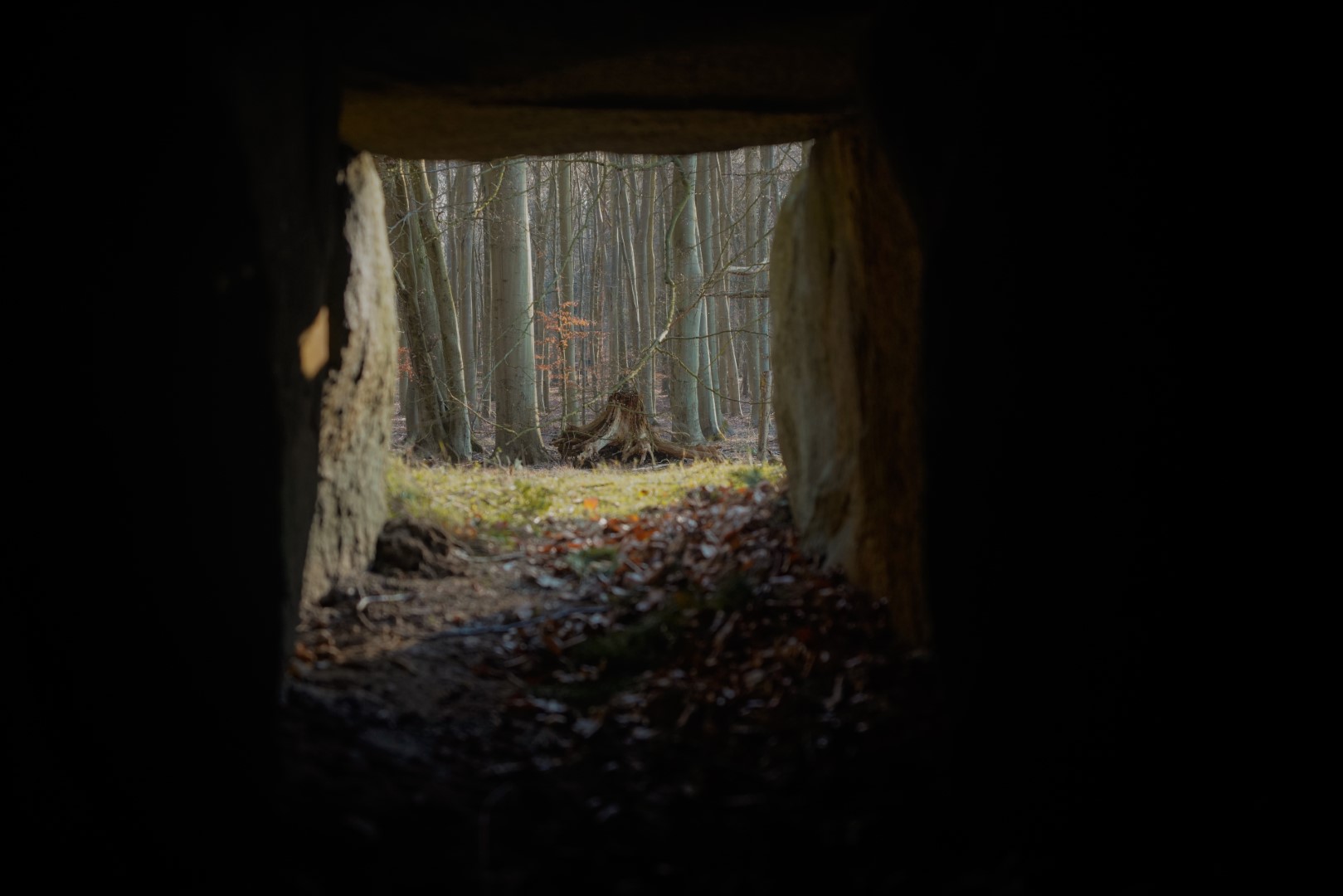
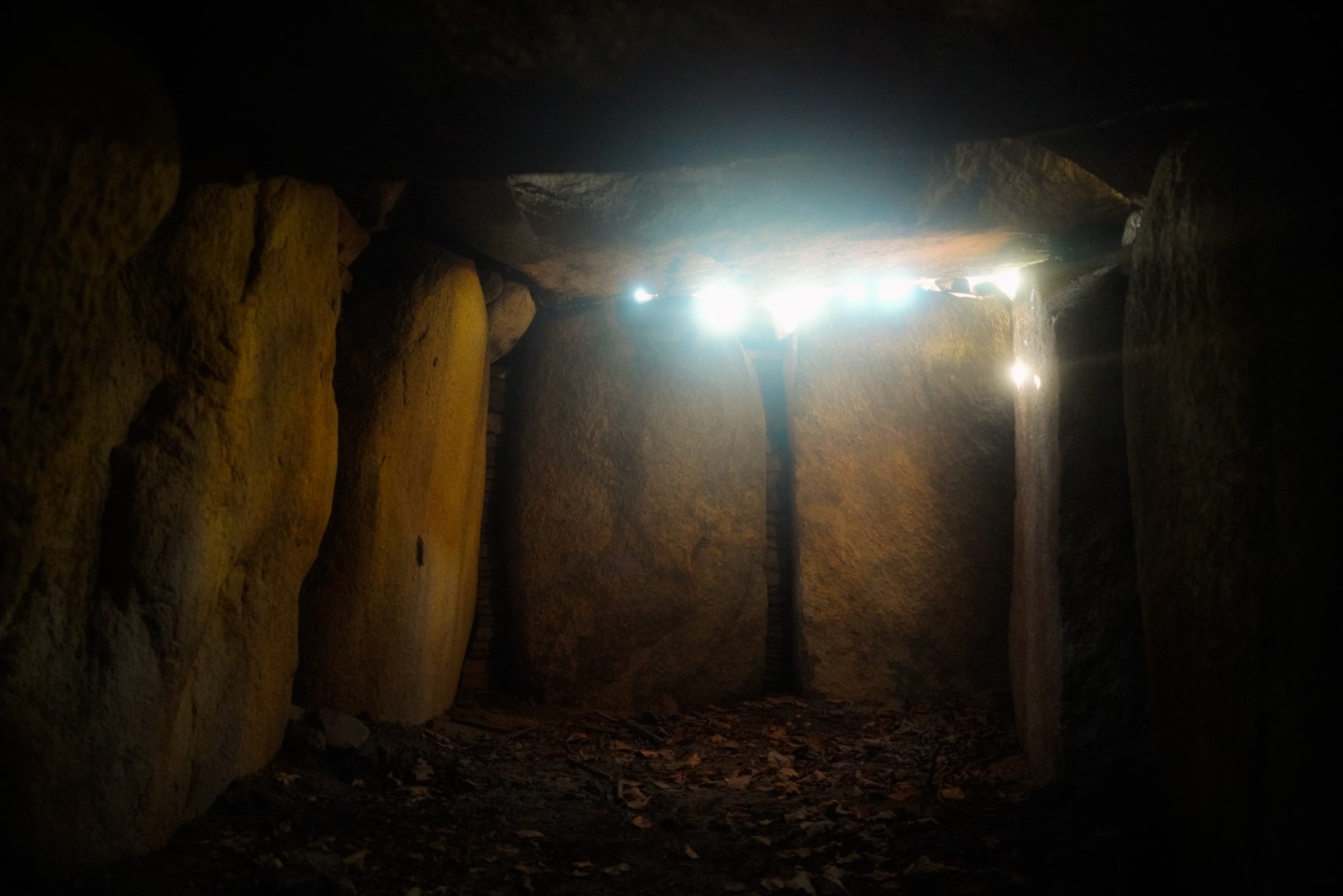

I headed towards the edge of the forest where I came to (possibly) the most idyllic farm on Lolland with snowdrop flowers all over. I can hardly imagine a more serene place to live.
But then it was time to leave the trails and gravel roads behind and head down asphalt roads towards the village of Flintinge. For the first time that day, I put music in my ears and just enjoyed walking this uncomplicated straight road past more idyllic rural farms. Rather unexpectedly, after several slightly boring kilometres along the straight roads, I spotted another Neolithic dolmen, this one in the middle of a field. I found a small footpath and walked over to the very well-preserved burial structure!



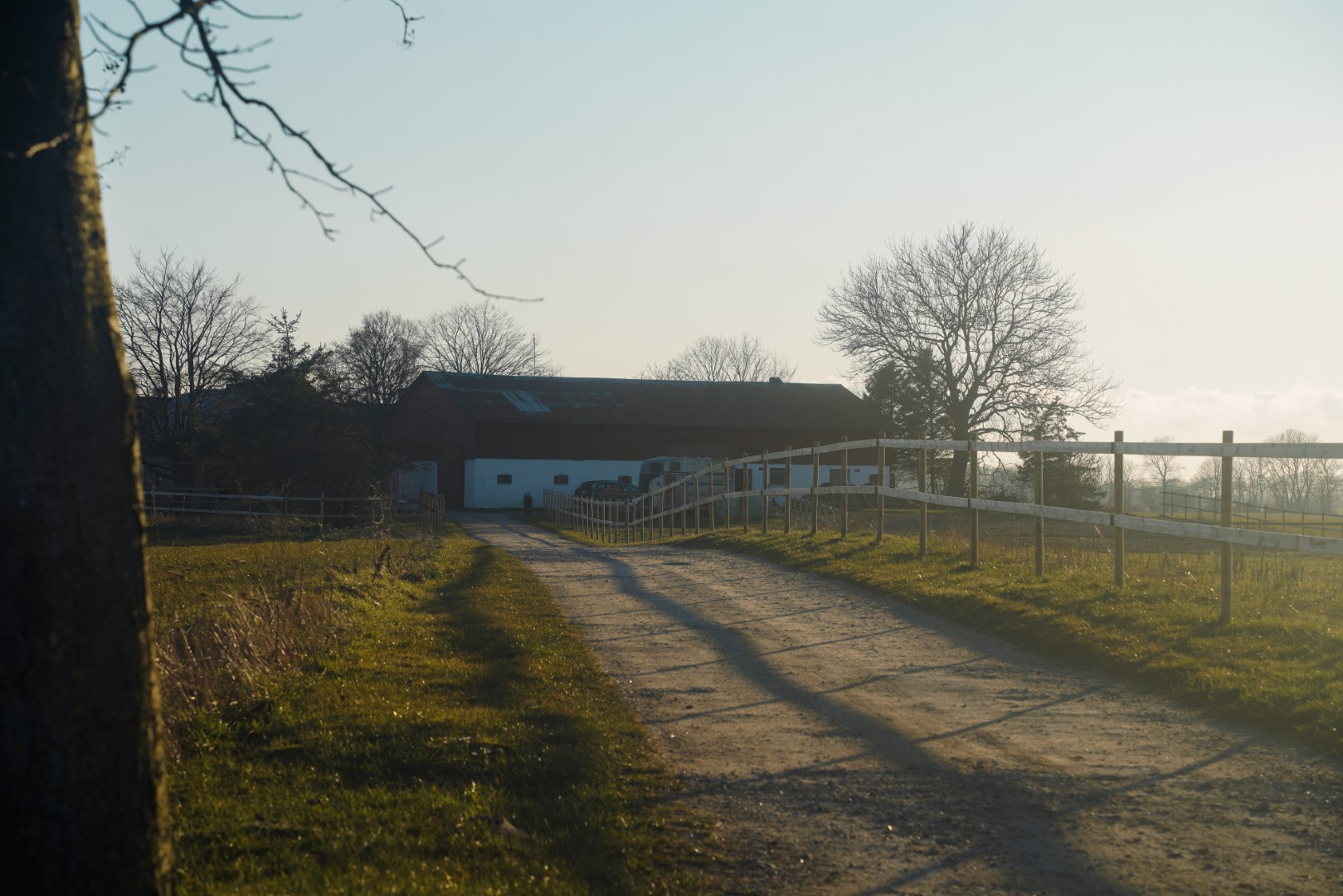
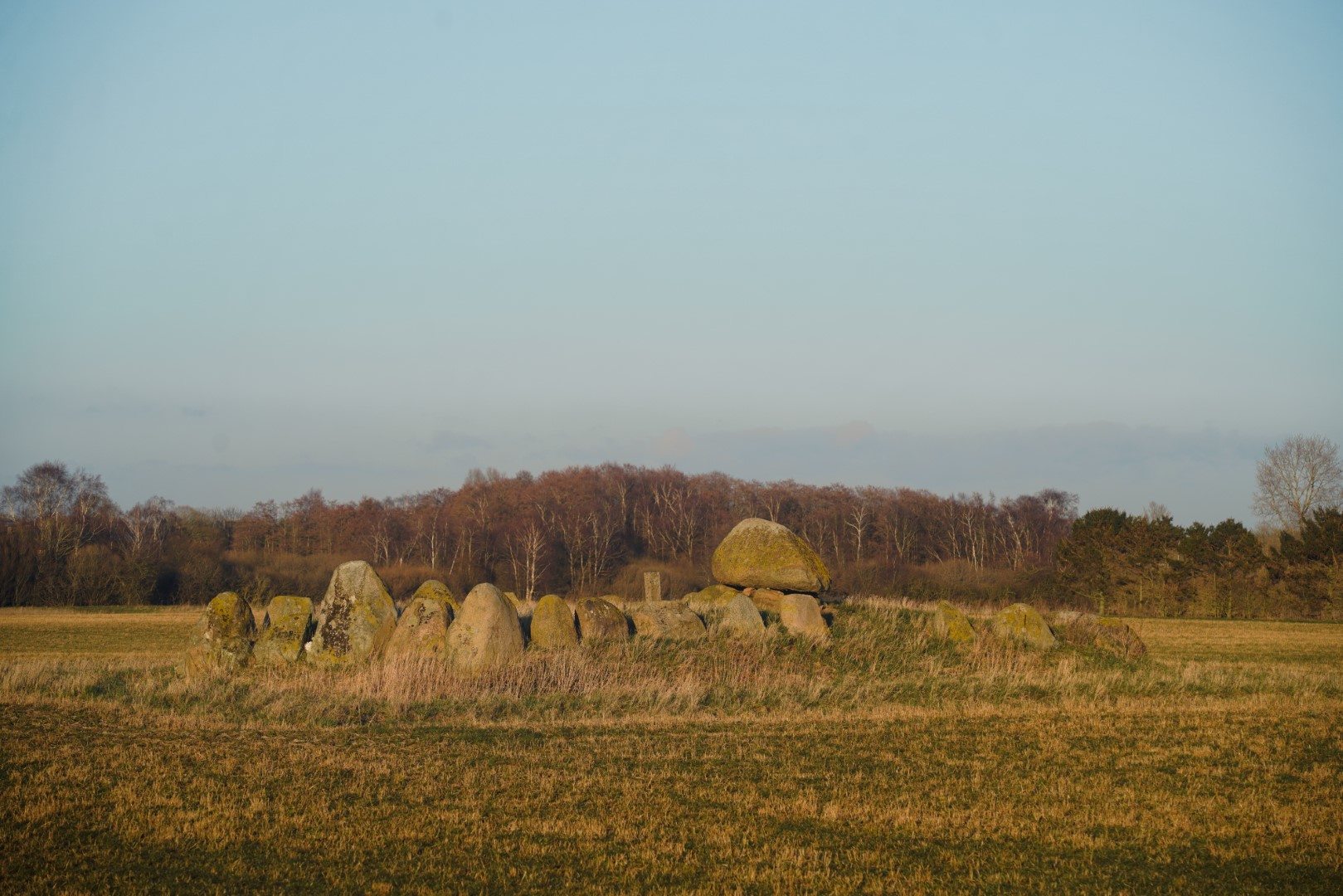

Two friendly dogs ran out to greet me as I passed by their farm where a cat rested on a haystack in the sun. Welcome to the countryside!
I finally reached Flintinge, and met three more cats enjoying the warm afternoon sun as I made my way through the village, on the lookout for the so-called “church trail” which connects Flintinge with the village church of Toreby from the early 13th century. Church trails are found all over Denmark. Many were recently re-established after these old paths had disappeared as a consequence of the development of modern society. Thankfully, locals all over the country have worked to restore some of them, creating more quiet outdoor spaces for hikers and cyclists.
The sun was getting ready to set, putting on a beautiful show of warm golden colours as I walked along the church trail, passing by the most perfectly located shelter site I’d ever seen. Unfortunately, I didn’t have time to linger for long as the bus was leaving soon and I didn’t want to wait another hour for the next one. So I just viewed Toreby’s church from afar, deciding for myself that it was probably closed anyways, and half ran, half power walked to the bus. I made it just in time and watched the sun bid farewell with a gorgeous show of pink and orange hues as the bus driver took me to the train station.

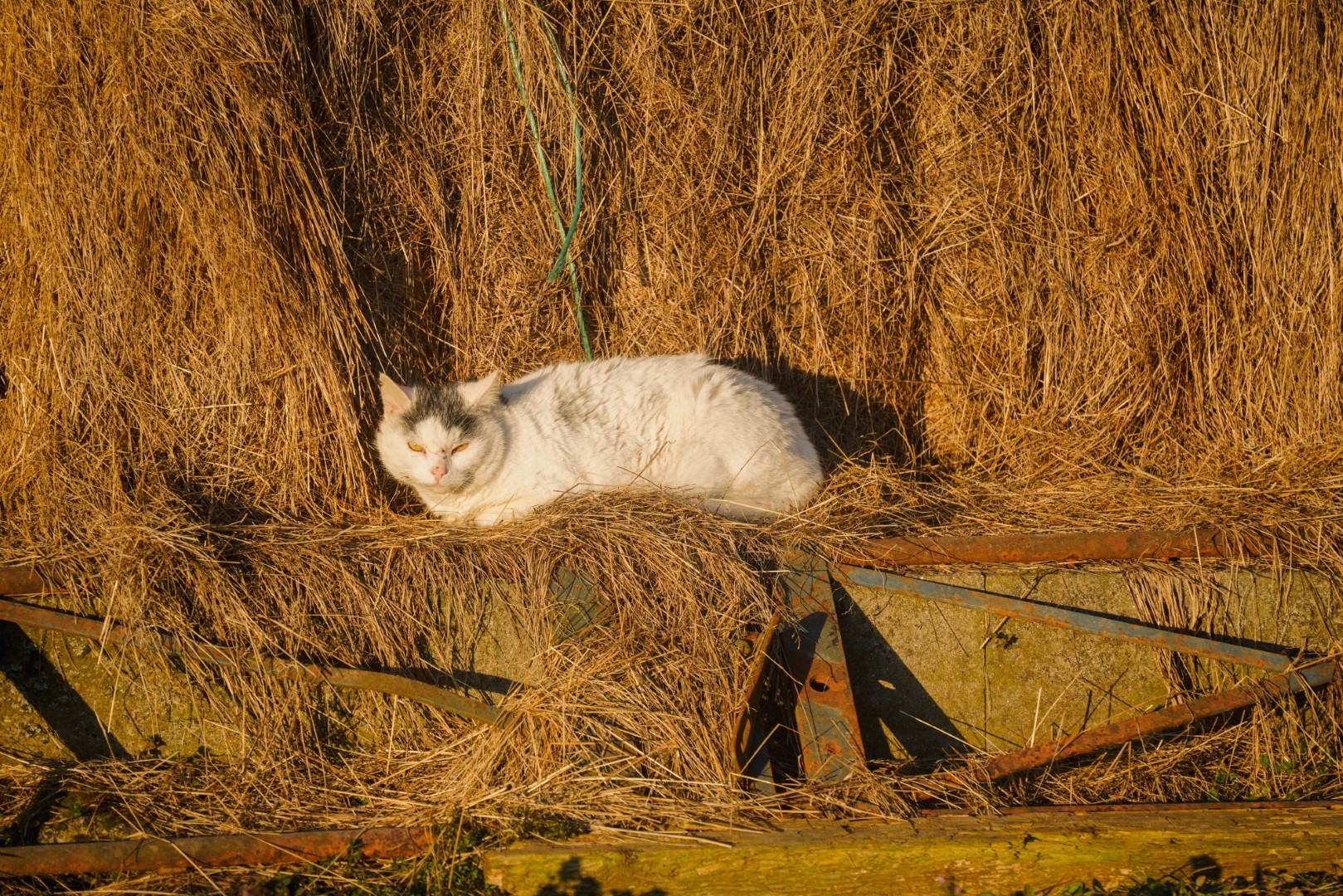
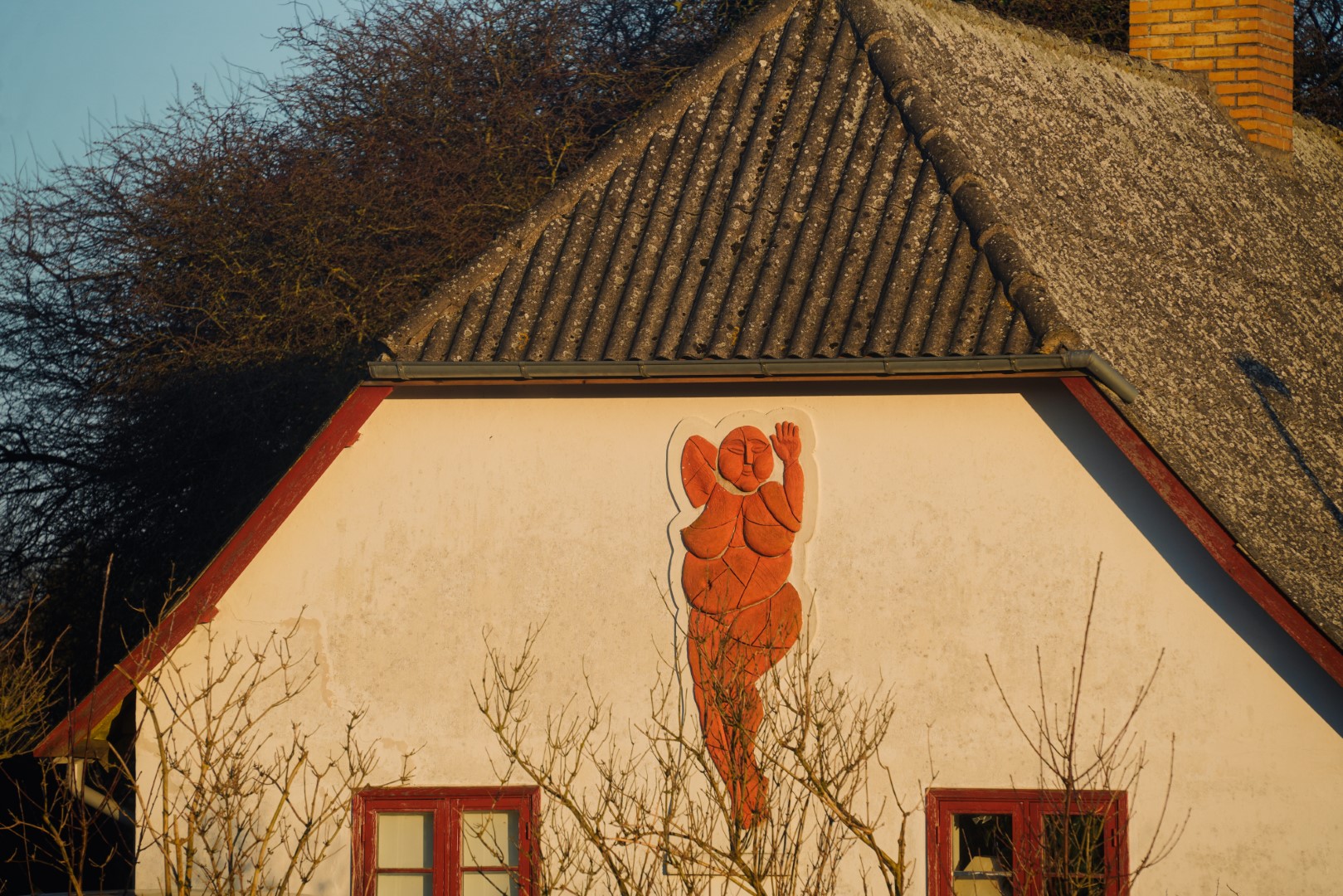

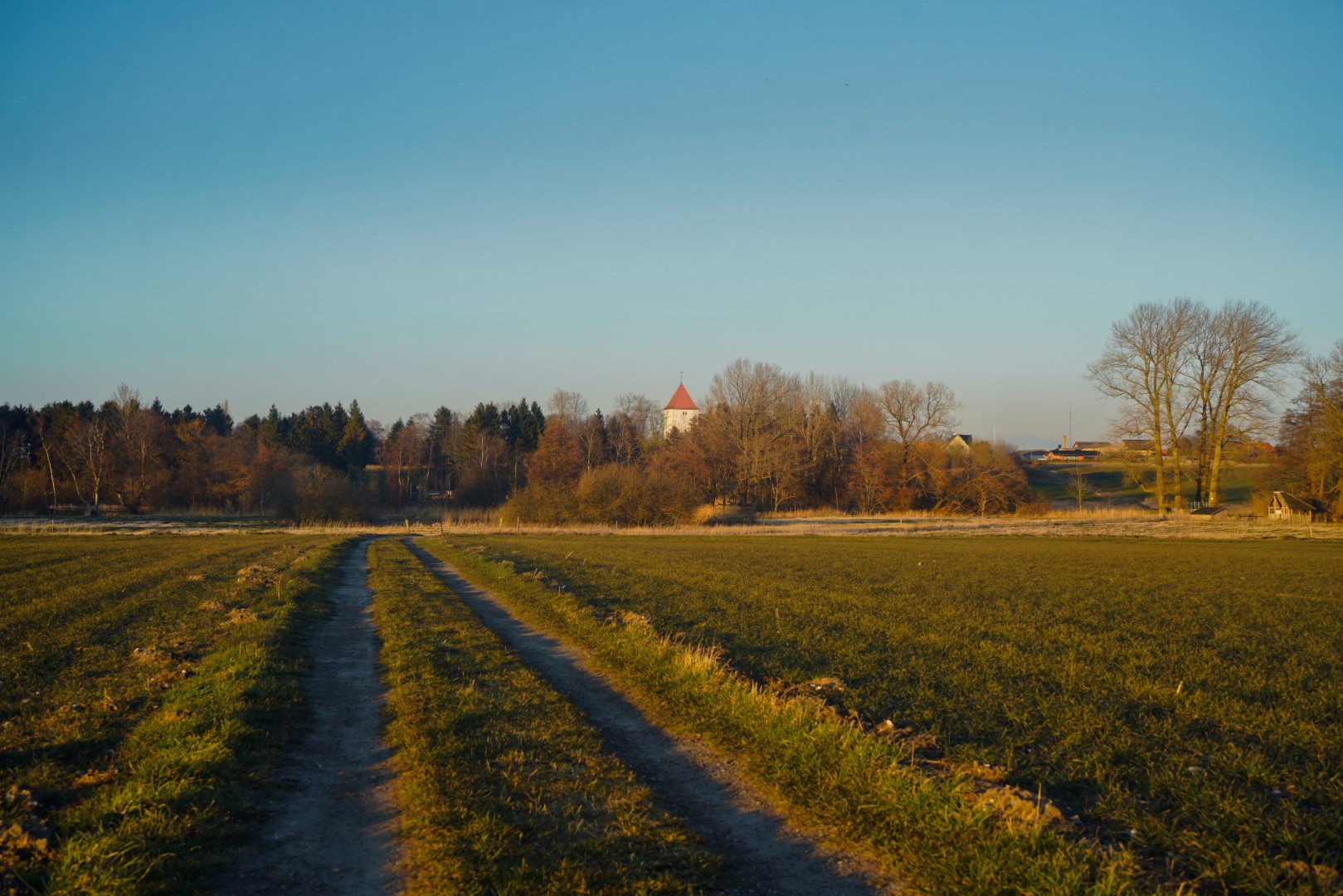
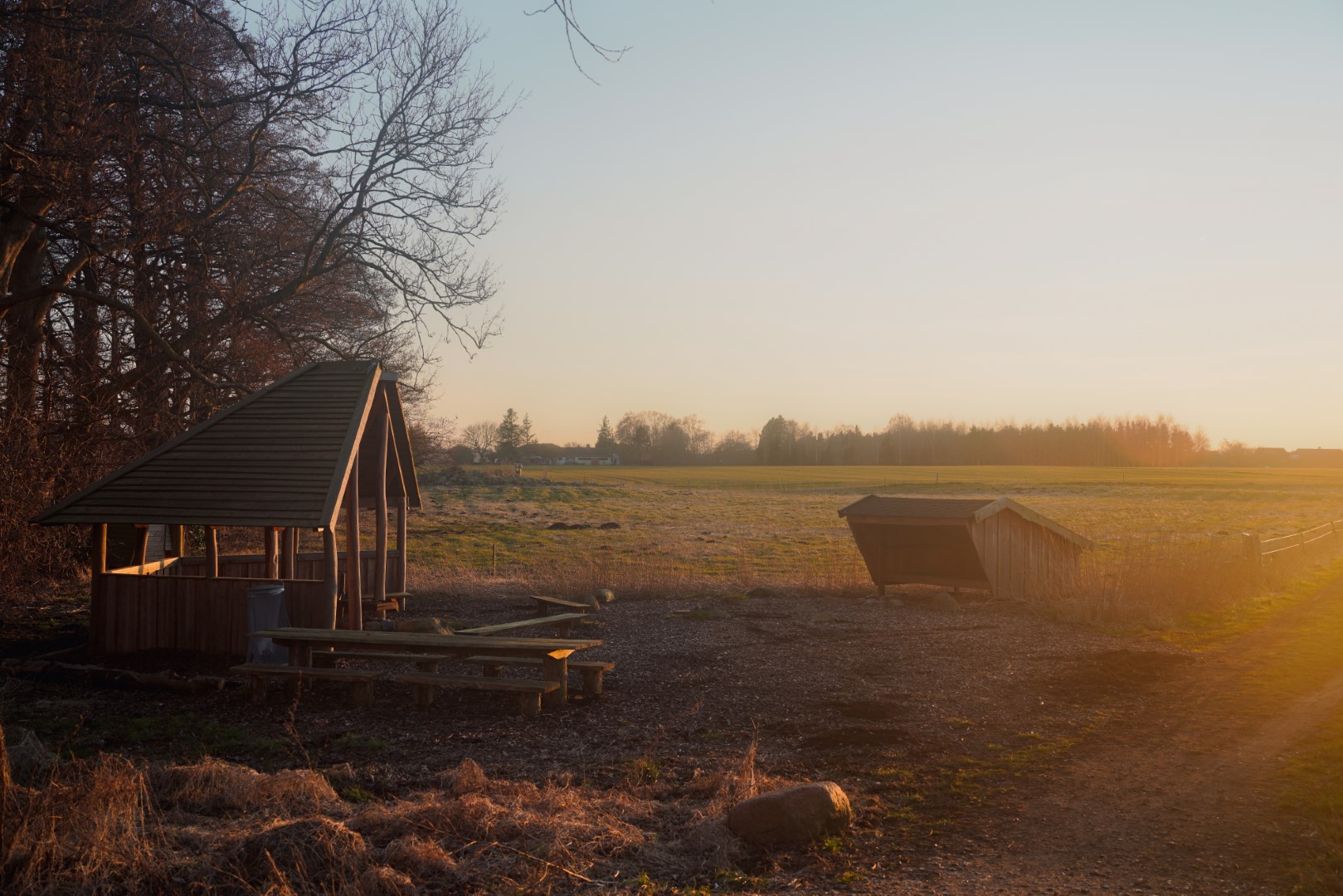
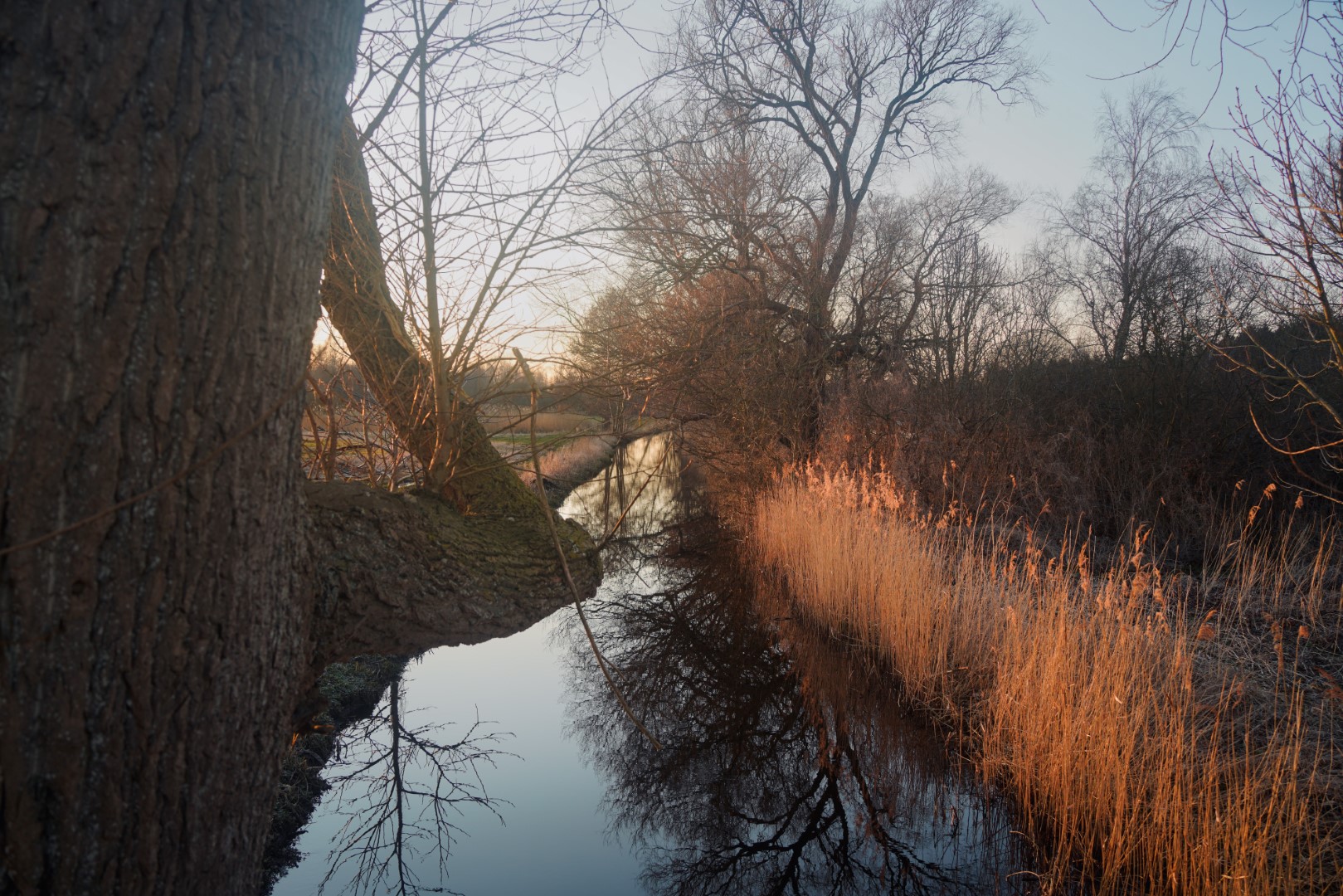

Hiking route description: Sakskøbing to Toreby via Krenkerup Manor and Flintinge Byskov
The hike begins at the train station in Sakskøbing. Walk right along Jernbanegade, and then turn right onto Søndergade, passing by “Saxine”, the town’s iconic water tower. Once you reach the crossroad, turn left onto Stadionvej and walk between the two lakes. You’ll soon see a footpath to your right, just before the stadium. Follow the trail along the lake and join onto the path going under a bridge, leaving the lake behind. After the tunnel, the trail splits in two on either side of a small stream; take the upper trail.
Soon after, you’ll come to a crossroad; turn left here, going deeper into the forest. At the next crossroad, take a right turn and after then turn left at the next crossroad. After a while, the trail goes first right, then left and soon you’ll see two small buildings. Turn right and walk past the buildings, and you’ll soon spot Krenkerup Manor. Explore as much as you’d like and then continue along the trail through two gates and into Haveskov, the public part of the manor gardens. You’ll get incredible views of the manor from here, and it’s also a perfect spot for a little snack break! Walk along the right side of the lake and then when you reach the point where the lake stops, turn right, going away from the manor. When you reach the edge of the forest, right before getting to a gate, turn left and cross a bridge and then turn left along a gravel road back towards the manor. Go around the small house at the end of the road and then turn right onto a long country road.
Enjoy the countryside views as you make your way along the road, and turn left when you reach a crossroad. Turn right shortly after onto an asphalt road and soon after, take the second gravel road to your left into the forest, Hydeskov. Take the first right and continue going straight at the crossroad, and at the next crossroad, turn right and then immediately left just before the fir trees. You’ll soon reach a small stream which you’ll have to cross, either by jumping, climbing over a fallen tree trunk or making a bridge for yourself with big branches like I did.
Make your way through the forest to a fence. There’s no trail here even though maps.me says there is, but just walk right along the fence and you’ll soon come to a footpath leading to the passage grave. Don’t miss out on the opportunity to walk inside a 5000+-year-old megalith, and also look to your right just 50 metres or so from the passage grave where the remains of a Neolithic dolmen lie. From here onwards, there is an actual trail to follow, which soon meets a crossroad where you should go left and then right some hundred metres later. When you reach the farm (perhaps the most idyllic farm on all of Lolland!), keep going straight on the right side of it. You’ll soon leave the forest trails and gravel roads behind as you join onto an asphalt road. At the crossroad, turn right down Byskovvej and then take the first left along Vestermark and follow the road until you reach the village of Flintinge. There is a well-preserved dolmen in a field on the left side of the road shortly before you reach the village – feel free to explore it but do be careful of any crops on the field.
Entering Flintinge, continue past some of the pretty village houses until you see a trail on your left – this is the “church trail” to Toreby. Follow it past a beautifully located shelter site, and soon after, you’ll reach Toreby with its early 13th–century church. This is where the hike ends.
To get to the bus, turn right onto Torebyvej and after 500 metres, turn right onto Flintingevej and you’ll see the bus stop. The bus to Nykøbing Falster stops at Øster Toreby, the closest train station for connections on Lolland. The route is 15,2 km long, takes 4-5 hours and is easy with flat terrain the whole way.
Leave a Comment
Pingback: My April 2022: From Rømø to Germany and Belgium – I Live as I Dream on 09/04/2022
Pingback: A journey to Albuen, a unique cultural landscape at the edge of Lolland – Northtrotter on 09/04/2022
Pingback: My travel year of 2022 – Northtrotter on 09/04/2022
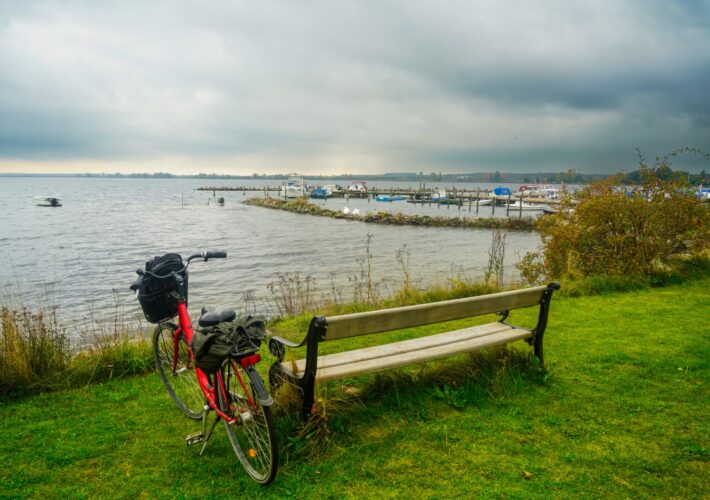
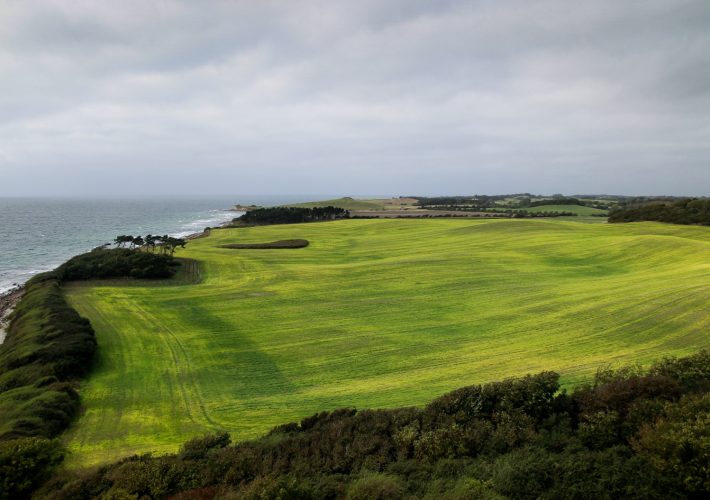
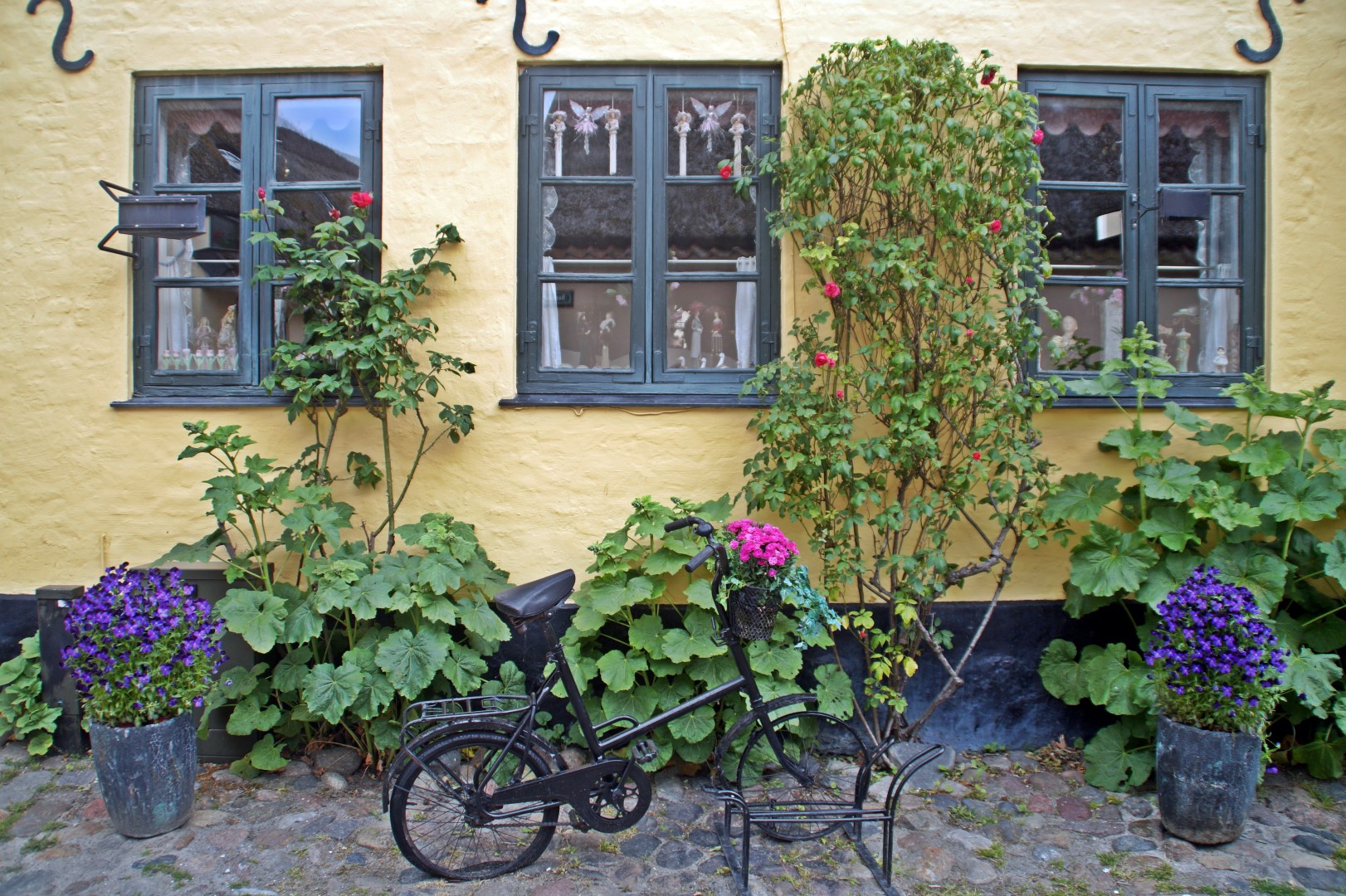
3 COMMENTS